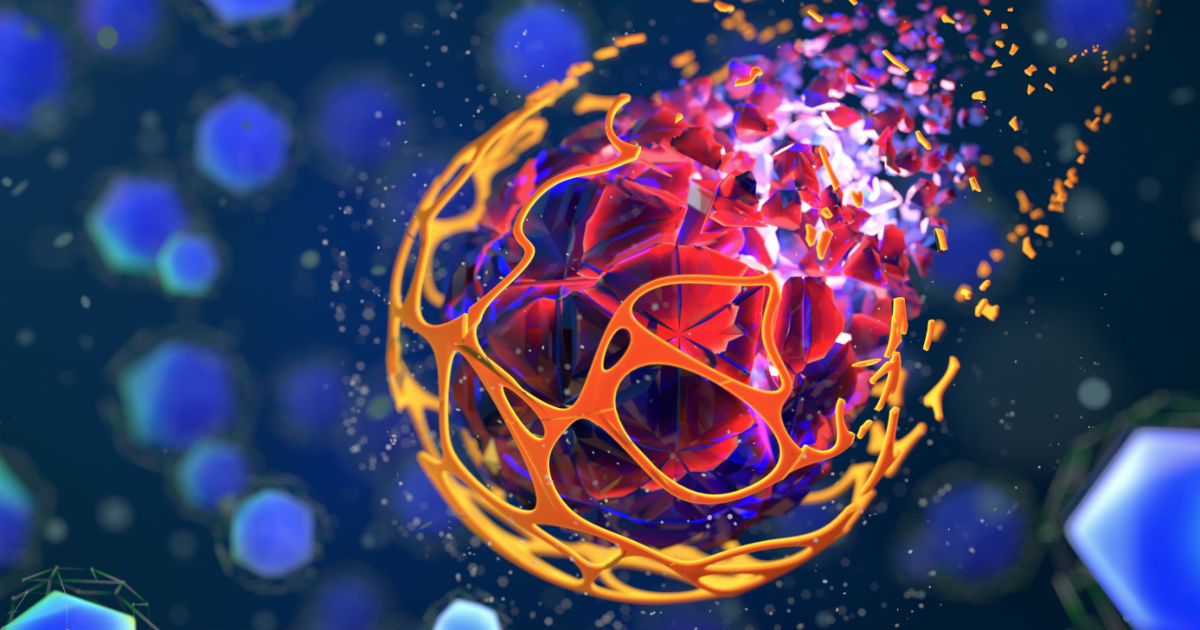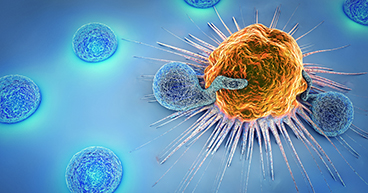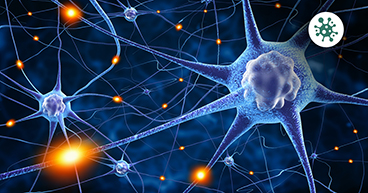
Like villains in a superhero comic book, cancer cells in many ways are masters of disguise and deception, using their duplicity to grow unchecked and, sometimes, spread to other parts of the body. To metastasize, the cells must travel undetected past disease-fighting agents, spreading to another organ, where they can proliferate anew in a different environment. Their plasticity allows cancer cells to adapt to varying habitats and helps them evade detection and treatment.
“Optimal treatment of cancer is a major challenge because of the ability of cancer cells to mutate and develop resistance to anti-cancer pharmaceutical agents,” says Maurie Markman, MD, President of Medicine & Science at Cancer Treatment Centers of America® (CTCA).
Supervillain monikers
Cancer cells don’t have supervillain names, but if they did, here are how some real-life cancers might be known:
The Chameleon
Characteristic: This cancer cell is able to hide by imitating traits found in other cells.
Example: Researchers at The City of Hope have found breast cancer cells that disguise themselves as neurons in the brain, escaping detection by feeding themselves on a protein called GABA. This neuro-transmitter allows them to behave like brain cells, so they can break through the blood-brain barrier and form brain tumors.
The Shapeshifter
Characteristic: This cancer cell is malleable and able to change its structure, making it more effective at migrating to other areas of the body and more adept at invading tissues in other organs.
Example: Scientists at Johns Hopkins University have found prostate cancer cells with lower-than-normal levels of a protein called “absence in melanoma 1” (AIM1), which helps give the cells their shape. “Our experiments show that loss of AIM1 proteins gives prostate cancer cells the ability to change shape, migrate, and invade,” Johns Hopkins researcher Michael Haffner, Ph.D., told Medical News Today.
The Copy Cat
Characteristic: This cancer cell is able to adopt the identity of nearby cells.
Example: Researchers at Duke University School of Medicine have found lung cancer cells that evade chemotherapy by pretending to be gastrointestinal cells not targeted by the treatment. These cells lack a gene called NKX2-1, which gives lung cells their appearance.
The Dorian Gray
Characteristic: These cancer cell has the ability to appear to stay young.
Example: Memorial Sloan Kettering Cancer Center researchers found a lung cancer cell that is able to maintain its youth by turning on and off proteins called SOX2 and SOX9. Activating the SOX2 protein helps the cancer cell travel and gain a foothold in a new organ, encouraging the cell to behave like an embryonic stem cell. However, because SOX2 is susceptible to detection by some immune cells, the cancer cell must rapidly switch to the SOX9 protein to avoid detection and metastasize.
All these cancer cell bad guys rely on similar tactics, blending into their surroundings by changing the way they look, how they are perceived or how they interact with other cells.
Fighting back
In some cases, researchers have found a way to fight back by pulling a trick out of a cancer cell’s own playbook. A Mayo Clinic of Florida study examined tumors from breast and brain cancers because of the deadly impacts of their spread. They uncovered a protein, called Syx, that plays a major role in the migration of the cancers’ cells. By removing Syx, researchers got the cells to shapeshift, but the new shapes that emerged—resembling “fried eggs” or exaggerated starfish—scrambled the cells’ sense of direction and stopped them from spreading.
Identifying how cancer cells change their appearance and behavior is important for scientists looking to exploit their weaknesses and find new ways of fighting them. Immunotherapy drugs called checkpoint inhibitors have been designed to help to unmask cancer cells who can hide from the immune system. And targeted therapy drugs have been designed to seek out and attack a cancer cell’s weakness. “It is through a better understanding of the molecular biology of individual cancers that we will be able to more effectively target their vulnerabilities,” Dr. Markman says.
What can we learn about cancer from Justice Ruth Bader Ginsburg?



